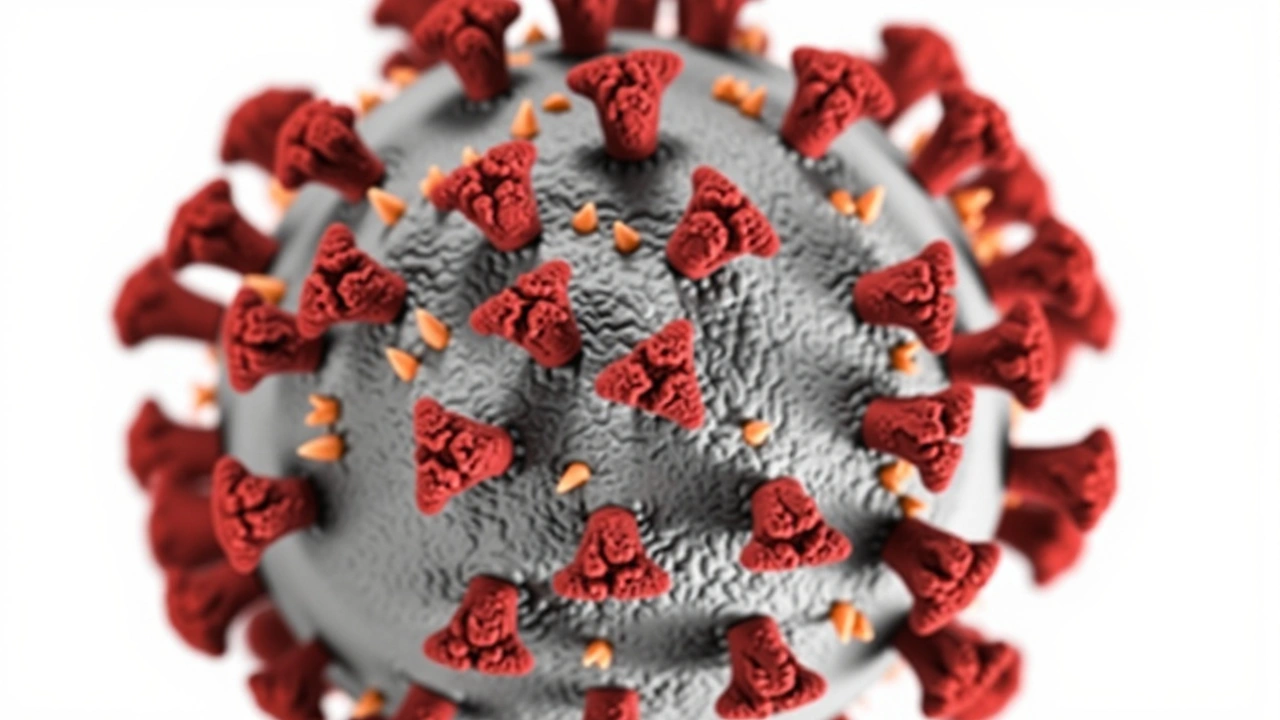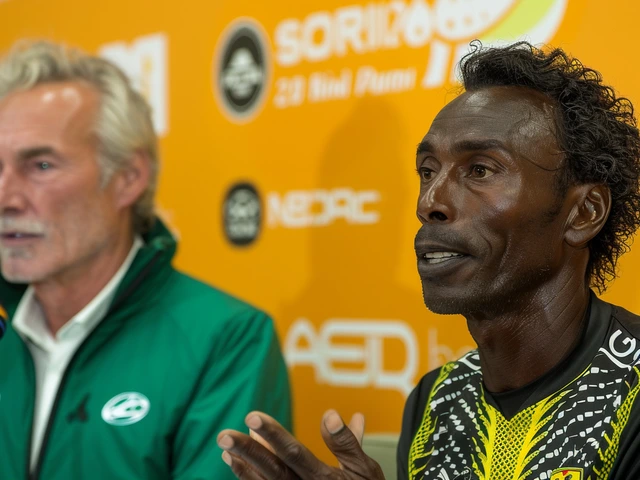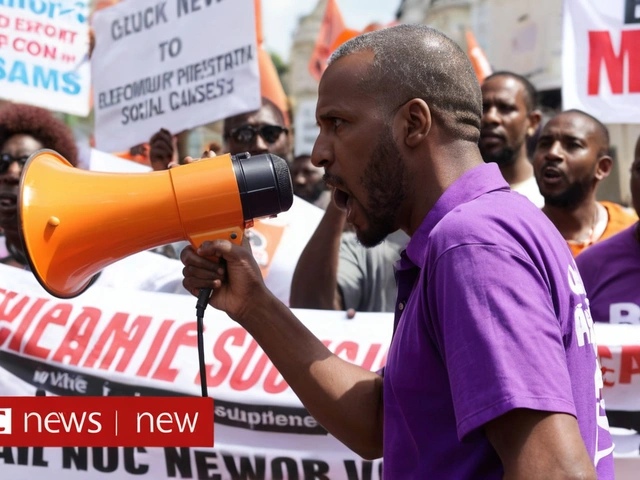An Emerging Health Concern: HMPV in China
In recent weeks, reports from China have highlighted a burgeoning health concern revolving around the rise in human metapneumovirus (HMPV) infections. While not a novel virus—first identified in 2001—HMPV has surfaced prominently, unsettling the global community amidst whispers of its likeness to the infamous COVID-19 pandemic. HMPV predominantly triggers symptoms akin to those of the flu, mainly attacking the upper respiratory system. While this may seem benign, the virus harbors the potential to escalate into severe respiratory difficulties, particularly in vulnerable populations like children, the elderly, and those with compromised immune systems.
China, the epicenter of the initial COVID-19 pandemic, once again finds itself under the international spotlight. The growing incidence of HMPV cases is drawing a stark comparison to early 2020 when the novel coronavirus first emerged. The cause for concern mostly stems from the manner in which HMPV spreads—largely through respiratory droplets and contact with contaminated surfaces. This mode of transmission, unfortunately, resonates with the hauntingly familiar patterns of SARS-CoV-2, the virus responsible for COVID-19, which leads to heightened parental alertness and the strengthening of public health measures in affected regions.
A Closer Examination of Similarities and Responses
Amidst the swirling comparisons to COVID-19, health experts have been quick to note both the similarities and distinctions between HMPV and the novel coronavirus. While they share common transmission pathways and a propensity for causing respiratory illnesses, evidence suggests that HMPV generally results in less severe outcomes. Symptoms typically include coughing, sneezing, and fever, with severe cases demanding hospitalization, especially in at-risk individuals.
Despite the growing number of cases, the Chinese government, alongside their health departments, have proffered reassurance about the situation's controllability. Public statements, particularly from Chinese Foreign Ministry representatives like Mao Ning, allude to a manageable outbreak, one that is reportedly less severe and exhibiting smaller-scale spread compared to past years. Foreign travelers have also been assured that visiting China remains safe, despite circulating images of overcrowded hospitals in urban centers. With advisories in place, the Chinese National Disease Control and Prevention Administration continues to endorse universal precautions—namely hand hygiene, mask-wearing, and the practice of social distancing—as methods to mitigate further virus transmission.
International Perspective: Calls for Calm and Preparedness
Outside of China, countries like India, through authorities such as Dr. Atul Goel, Director-General of Health Services, have emphasized that panic is unnecessary. In public addresses, Indian health officials have reinforced that, as of now, there are no recorded cases of HMPV within their national borders. Moreover, during the winter months, it is not uncommon to see an uptick in respiratory-related illnesses, but the nation's hospitals are equipped to handle such surges. The reassurance mirrors a global understanding that preparedness is key in addressing viral outbreaks.
From an academic standpoint, virology experts, including those like Professor Andrew Easton at the University of Warwick, contribute context to HMPV's current status. Though it has been an underlying concern within vulnerable populations globally, the increase in incidence or any shift in infection patterns is indeed noteworthy, warranting close attention from public health communities worldwide.

Research and Preparedness: The Role of Global Health Organizations
The response from global health bodies like the World Health Organization (WHO) has been marked by a disciplined approach when addressing HMPV. Although there are alarming narratives and speculative claims floating across social media channels, there is no substantiated evidence of an epidemic or state of emergency at present. Advocacy for research and vigilance remains a central theme in worldwide strategies to safeguard public health from existing and emerging viruses alike.
In conclusion, the response to the HMPV outbreak in China highlights the importance of proactive health measures and the value of informed public discourse. Rather than succumb to fear, a balanced perspective that prioritizes hygiene, awareness, and international cooperation will serve us well against this respiratory virus. Equipped with experience from pandemics past, the global community stands vigilant, ready to act as new health challenges arise.










19 Comments
Looks like another buzzword pandemic scare, but honestly, HMPV hasn't been anything we haven't seen before.
When we stand at the crossroads of history, it is tempting to draw parallels between every respiratory whisper and the thunderclap of COVID-19, yet the epistemic rigor demands a more nuanced tableau. The human metapneumovirus, though evading the limelight for two decades, now resurfaces like a neglected chord in a symphony of pathogens. Its clinical portrait-cough, fever, nasopharyngeal irritation-maps onto a familiar topography, but the severity gradient remains distinctly shallower than the abyss we once navigated with SARS‑CoV‑2. Epidemiologists rightly caution that transmission vectors, primarily droplets and fomites, mirror those of the coronavirus, but the reproductive number (R0) of HMPV generally hovers below the pandemic threshold, suggesting a self‑limiting arc under vigilant public health stewardship. Moreover, the demographic susceptibility skews toward infants, the elderly, and immunocompromised hosts, echoing the risk matrix that haunted us in 2020, but with a comparatively narrower mortality envelope. The Chinese authorities’ messaging, emphasizing hand hygiene, mask usage, and social distancing, is a textbook application of non‑pharmaceutical interventions that, when adhered to, can compress the outbreak curve without invoking lockdowns. A global lens reveals that, unlike the novel virus, HMPV lacks the mutational dynamism that fuels immune escape, thereby conferring a more predictable vaccine and therapeutic landscape.
While the specter of panic is as alluring as it is unproductive, a calibrated response-bolstered by surveillance, rapid diagnostics, and clear communication-will likely avert the cascade of fear that once stormed the world. In this context, the role of the WHO transitions from crisis manager to steadying hand, guiding nations toward evidence‑based policies while quelling misinformation. The pandemic’s lingering cultural imprint should remind us that preparedness is not a static checklist but a living, adaptive process, where each new pathogen is both a test and an opportunity for collective learning. Ultimately, the HMPV episode may serve as a rehearsal for future encounters, underscoring that the lessons of COVID‑19 are not relegated to the past but are active ingredients in our epidemiological arsenal.
Ah, the ever‑seasoned dance of sensationalism-spinning HMPV into a COVID‑like apocalypse is just the latest riff on the same tired record. While the virus does hitch a ride on droplets, the infectivity and mortality curves are worlds apart, and the alarmists forget that nuance is the antidote to hysteria. Let’s not pretend the world is on the brink of another global shutdown; the data simply don’t support that melodrama.
Brace yourselves, dear readers, for a tragedy of epic proportions-if only the playwrights of the internet would let the script breathe! HMPV may be a pesky nuisance, but to paint it as the sequel to COVID‑19 is to wield hyperbole like a theatrical sword. In reality, the drama belongs to those who thrive on fear, not to the modest virus itself.
For anyone looking for practical steps, the usual preventive measures still apply: frequent hand washing, using alcohol‑based sanitizers, and staying up‑to‑date with any local health advisories. While HMPV tends to cause milder illness, it can still pose a risk to vulnerable populations, so protecting them remains a priority.
Just another virus keep calm and carry on
One could argue that the fixation on HMPV reflects a deeper societal craving for a villain, a narrative anchor to justify our collective anxieties. Yet, elevating a relatively benign pathogen to the pantheon of existential threats merely reveals our own penchant for melodramatic storytelling. In the grand tapestry of infectious disease, HMPV is but a modest thread, not the looming dread some would have us believe.
Really, you must be kidding! The absurdity of treating HMPV as a pandemic‑level crisis is beyond belief! Let us remember that not every cold deserves a state of emergency, and yet some choose to blow it out of proportion, ignoring the facts!!!
Oh great, another virus to add to the list of things we pretend to be scared of.
Let’s keep the conversation constructive: sharing accurate information, supporting public health measures, and avoiding needless panic benefits everyone, regardless of borders.
While the headlines may shout alarm, the best response remains grounded in science and solidarity. Stay informed, practice good hygiene, and trust that health systems are prepared to handle seasonal respiratory challenges.
From a cultural perspective, it’s fascinating how each region frames viral threats through its own historical lens. In China, the memory of COVID‑19 fuels vigilance, whereas elsewhere the narrative may be more subdued. Recognizing these differences helps us tailor communication strategies that resonate locally.
Stay positive, folks! 🌟 HMPV is manageable and we’ve got this! 😊
From an empathetic standpoint, it’s essential to acknowledge the anxiety that any emerging respiratory pathogen generates, especially among caregivers of high‑risk individuals. The clinical spectrum of HMPV-ranging from common cold‑like symptoms to severe lower‑respiratory involvement-requires a stratified approach. While routine prophylaxis (e.g., vaccination against influenza) remains the cornerstone of mitigating co‑infection, clinicians should also consider supportive therapies such as supplemental oxygen for hypoxic patients and vigilant monitoring for secondary bacterial pneumonia. In settings where diagnostic capacity is limited, a syndromic assessment can guide interim management, but rapid antigen testing, when available, enhances specificity. Moreover, public health efforts should continue to promote non‑pharmaceutical interventions (hand hygiene, mask compliance in crowded indoor spaces) as cost‑effective barriers against transmission. Finally, fostering transparent communication channels helps reduce misinformation, thereby preserving public trust and ensuring community adherence to evidence‑based recommendations.
It’s a moral imperative to avoid sensationalism; the real victims are those who bear the brunt of unnecessary fear and the economic fallout it brings.
Sending love and clear information to everyone navigating these health updates! 😊 Stay safe and keep looking out for each other.
In the grand scheme, each virus teaches us a lesson about resilience and cooperation; we grow stronger when we share knowledge and support one another.
Isn't it intriguing how the media amplifies certain outbreaks while others receive minimal coverage? Could this be a bias toward sensational headlines rather than a balanced public health narrative?
HMPV is a reminder that vigilance, not panic, is our best tool.